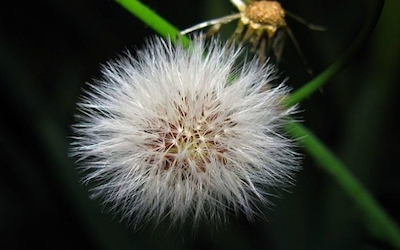随着PTE考生对PTE口语和PTE听力的重视,大家口语和听力的分数得到极大提高,但是PTE阅读渐渐成为考生们新的难题。
墨尔本悉尼文波PTE特别为PTE考生们挑选了适合练习PTE阅读的文章,主题,内容,长度都与PTE阅读题中的文章相似。激活学过的词汇,更新新的词汇,提高阅读速度,全面提升自己的阅读能力。
Weeds are the bane of gardening. They’re greedy and aggressive: they want the cleanest spaces in the ground (i.e., where you’ve just spent a significant amount of time prepping the dirt), and as many resources and nutrients as they can siphon away from your garden. Left unattended they will choke out the intentionally cultivated plants and spread. They’re insidious. But at one point in their history weeds were just, well, wild plants. The designation of plants as weeds represents a pivotal moment in our evolutionary history. In the archaeobotanical record, a large deposit of weeds may indicate instances of cultivation. This is exciting because we didn’t fall into domestication overnight but for obvious reasons there are many gaps in understanding how we got there. Finding early weeds can help us learn how we arrived at agriculture’s doorstep.
Modern weeds are those plants that appear in field crops, such as lambsquarters, milkweed and purslane. In the archaeological record, however, weeds are those plants that disrupt natural ecosystems and human-altered environments by their settlement in these spaces. We know that humans were modifying their immediate environments well before the Neolithic revolution by clearing land for local cultivation, creating spaces for refuse, and hunting and trapping. These activities created disrupted spaces that were suited to synanthropic plants (weeds). These plants have functional and adaptive traits (e.g., rapid water uptake, high growth rates, high dispersal capabilities) that enabled them to thrive in places that were intentionally altered by human contact. Their high success rates in these circumstances have proven beneficial to scientists: In instances where there is a significant collection of weeds in sites from the Neolithic period and later, we can assume there was systematic cultivation.
But how do we know the botanical remains we’ve found are weeds? It’s a fair question given that plants aren’t likely to be well-preserved in the natural record. Approximately 25,000 years ago people settled on the southwestern shores of the Sea of Galilee. Known as Ohalo II, the site flooded and was only discovered in 1989 when the lake water level dropped. The excavations that followed in the early 90s and then in the early 2000s revealed several brush huts and hearths. From the huts and hearths researchers were able to collect an assemblage of roughly 150,000 seeds and fruits, of which 10% of the seeds found belong to 13 families of current weeds. These onetime wild plants had managed to take up residence in cultivated spaces and either evolved into weeds or remained unchanged and began to function as weeds.
Almost all of the proto-weed seeds belong to one of two significant species of current weeds in crop fields; they’re either corn cleavers or darnel. The proliferation of the former among cereals, such as barley, wheat, and oat, which make up a third of the collected assemblage, suggests that that these plants may have been gathered in the wild and then grown in trial plots as an initial foray into cultivation.
Ohalo II does not represent “the start” of the agricultural efforts that would would herald widespread domestication efforts. There is no evidence for the continuation of cultivation in the following period. Instead, it implies an awareness of the potential in raising crops. A grinding slab was found on the floor of one of the huts and flint blades were found at the site, which strongly suggests that the people at Ohalo II were harvesting and processing grains for consumption. The weeds at Ohalo II, the proto-weeds, followed human activity much as weeds do today.
Bane: n. 毒药,灭亡的原因。
Siphon: n. 虹吸管;vt. 用虹吸管吸出。
Choke out: 堵死。
Insidious: adj. 阴险的,隐伏的。
Neolithic: adj. 新石器时代的。
Synanthropic: adj. 生态上与人类关联的。
Hearth: n. 壁炉,灶台。
Foray: n. 涉足,初次尝试。
Grinding: n. 刺耳的,令人难以忍受的。
墨尔本悉尼文波PTE原创首发
更多精彩请持续关注微信wenbo_tv2。





